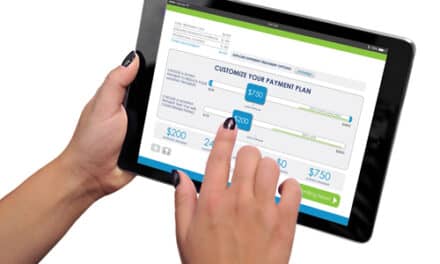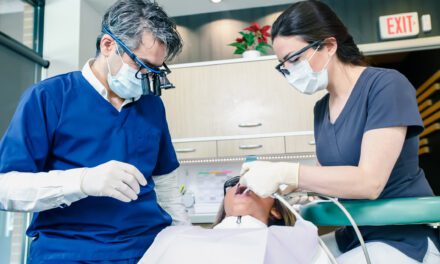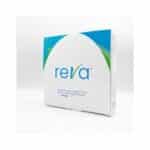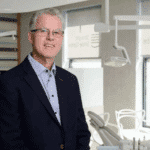By Alison Werner
Bentson Copple & Associates recently launched its first digital video series, “Dr Boomer and Dr Millennial: Generational Diversity.” The series, available on YouTube, brings to bear the firm’s decades of orthodontic consulting experience to help practices with age-diverse groups of doctors and team members navigate the generational differences within the practice.
The series stars Chris Bentson as Dr Boomer, who is based on Baby Boomer doctors born between 1946 and 1964, and Shannon Patterson as Dr Millennial, representing Millennial doctors born between 1981 and 1996. Each character is played to illustrate the traits associated with their generation. Dr Boomer represents a generation known for having a strong work ethic, placing significant importance on professional accomplishments, and for being somewhat reserved from a social perspective. Dr Millennial is based on a perception that Millennial doctors are confident, ambitious, achievement-orientated, extremely tech savvy, while also valuing teamwork and seeking input and affirmation from others.
Although there are four generations currently at work in the orthodontic practice, the two most primed for conflict are Baby Boomers and Millennials. “These two generations grew up in different social and political eras that shaped their values and perspectives in the workplace,” says Patterson, a partner at the firm specializing in placement and retention of doctors.
And that lends itself to differing views on patient care and business relationships.

Technology and Work Ethic
Over the course of the last 5 years, Bentson and Patterson have heard from older doctors with whom they work about the difficulties of adding an associate or going into partnership with younger doctors. These doctors are quick to label Millennials as entitled and too reliant on technology. Patterson doesn’t buy into it. “I really became an advocate for the younger doctor,” she says. When an older doctor complains that Millennial doctors don’t want to take 25 paper charts home at night, she counters, that’s not how they were trained. They were trained to use technology, like ClinChecks, to treatment plan. This exact issue is highlighted in the premiere episode.
And then there’s the flip side: the younger doctor frustrated that the technology they were trained on isn’t in the practice, and the older doctor saying, “Well, I’ve always done it this way.”
But this isn’t just an issue of technology. Perceptions about work ethic are at the root of much of the conflict.
“Older doctors tend to question the work ethic of Millennials, but what we see is their work ethic is no less or no greater than the Boomer work ethic. It’s just how they work is much different,” says Bentson, president of Bentson Copple & Associates. Millennials are inclined to leverage technology to work more efficiently, one, so that they don’t have to put in late hours at the office, and, two, so that they can work remotely.
“They want to leverage this new world of advanced technology so they can enjoy family time more. Whereas a lot of people of my age group ask questions like, ‘Why aren’t you here after hours, until 8 o’clock at night, like I was when I was a young doctor?’” Bentson says. “Millennials want to be just as successful and work just as hard, but the way they go about it is going to be different than the Boomers.”
As Bentson sees it, there is one aspect of the patient experience that younger doctors, newly out of their residencies, have a leg up: “They really understand how today’s consumer buys and is motivated in the marketplace.” And this is where Boomers could benefit from the Millennial perspective.
The Boomer generation places an emphasis on the personal touch—ie, face-to-face time spent with the patient, whether that’s staff or doctor face time. Meanwhile, the Millennial doctor understands that today’s patient (or consumer) prefers to minimize their time in the office, especially when it comes to the admin end of the patient experience. They favor online appointment scheduling and text, not phone, reminders. Yes, the patient still values that one-on-one interaction with the doctor; they just don’t want to spend it coming into their appointment early to fill out paperwork or answering phone calls reminding them about their next appointment.

The Reason for Partnerships
One topic Patterson and Bentson plan to weave through the video series is the subject of student debt. Patterson has all too often heard older doctors blame younger doctors for living like doctors during their residency—perpetuating the myth that they lived beyond their means before they had the means. But the real driver behind increased student debt is the actual cost of education which has risen significantly in the last decade. The video series will try to dispel this myth and explore how it impacts a Millennial doctor’s professional choices. For example, in Bentson and Patterson’s experience, today’s younger doctors shy away from opening their own practice. “They’re not as comfortable with entrepreneurship as the older generation was,” says Bentson.
Beyond the financial benefits of an associateship or partnership, Millennials often seek out these work arrangements for the mentorship opportunity. “Younger doctors are much more collaborative in their efforts,” says Patterson, pointing to the high participation rates of younger doctors in Facebook groups and online forums. There, doctors are able to bounce ideas off each other and get case advice.
The Future of the Series
Future videos will include light hearted topics like encouraging older doctors to loosen their ties—“I think they’re going to try to get me to dance or something,” says Bentson in his role as the Boomer doctor—and heavier topics like gender diversity. Women are entering the profession at increasing numbers. While data from the American Association of Orthodontists still puts women in the minority in the workforce with a breakdown of 72% male and 28% female, women are now in the majority in the residency programs with 51% to 49%.
The video series plans to tackle how generational diversity relates to the staff as well. Often staff will have been with the doctor since the beginning; and those older staff members can be as resistant to change as the older doctor. “A younger doctor has to understand that Susie who has been filing insurance one way for 25 years is not going to jump to [make a change,]” says Patterson, adding that it’s also not uncommon to have a senior doctor who is receptive to making a change and then get pushback from the team.
“Within each episode of the series, we’ll examine generational diversity in the orthodontic workplace, review some of the benefits and issues associated with it, and share some of the best practices based on our company’s experience,” Bentson says.
Ultimately, the goal of the series is to remove the age barrier by illustrating the differing viewpoints and asking viewers to take a step back and relate to it from the other side’s perspective. “What we see at the end of the day is that it’s not personality; it’s stepping back to better understand and to communicate a bit more,” Patterson says. OP
Alison Werner is chief editor of Orthodontic Products.










